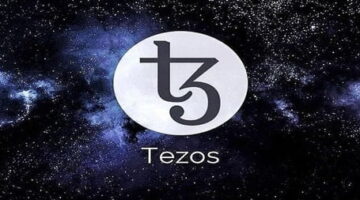The Marketing and Consumer Behavior of Bitcoin and its Users

The rapid boom in bitcoin’s price can be termed as a wonder which has left many economists aghast. Even when the bitcoin’s boom seems kind of over, the coin still holds a substantial value ($ 10, 209 at the time of writing). It still remains the most innovative and potentially transformative form of digital money affecting the consumer behavior around the world.
In this regard, bitcoin has a substantive effect on consumer behavior. This is mainly attributed to its use as a means of payment. A recent survey by Kaspersky Labs, a leading Russia-based cybersecurity firm, established that bitcoin-based payments are one of the most popular methods of conducting online payments despite the fact that it is far slower and far more unreliable and expensive than the top cryptos..
Thus far, there has been a rapid rise in the number of bitcoin purchase locations as well as online cryptocurrency exchanges, which presents a much more convenient and user-friendly means of purchasing bitcoins. Additionally, there are over 4000 bitcoin ATMs across the globe, making it available in-person.
Henceforth, this piece will analyze bitcoin whether it’s a security, commodity, or an investment asset and how it influences the marketing and consumer behavior of its users.
The Highs and Lows of Bitcoin throughout History
bitcoin’s rapid growth is said to have started in 2008 following its proposal by a pseudonymous software developer- Satoshi Nakamoto. The initial idea was to develop an electronic payment system based on mathematical proof and independent of any central authority. Beginning 2009, bitcoin received considerable media attention which saw it undergo a rapid boom in price. By the start of 2017, bitcoin’s value stood at just under $1, 000 but by the end of the year, it was worth nearly $20, 000.
Then come 2018, the bitcoin “bubble” burst, demonstrated by a significant fall in prices. Beginning January 2018 to February 2018, bitcoin’s price fell by an astonishing 65%. By November 2018, bitcoin’s price was only $4, 000 and the market capitalization for bitcoin fell below $100 billion for the first time since October 2017, representing an 80% decline in price.
How Does bitcoin Affect Consumer Behavior?
While bitcoin as a means of payment is still low, the digital asset has a considerable effect on our behavior as consumers. Bitcoin has gained widespread application as a means of payment in sports betting, real estate transactions, and therefore has a significant bearing on the consumer behavior of users.
Consumer Behavior – Hold (Hodl) or Sell?
After purchasing bitcoin for the first time, consumers adopt different behaviors to make considerable profits from their digital assets. There are two broad categories associated with consumer behavior- holding and selling.
Most first time bitcoin owners resort to holding their digital assets in the long run in an attempt to make considerable profits due to increased value. Other bitcoin buyers would look into widening or diversifying their crypto assets to mitigate risk. A minority of bitcoin owners actively trade their assets or sell their digital assets either entirely or partially.
Nonetheless, a majority of first time bitcoin owners aim to grow their digital assets and rarely sell portions of it. Instead, they seek to multiply their assets by keeping it for the foreseeable future until they attain a substantial value.
Why Do Consumers Purchase bitcoin?
There are different reasons why consumers decide to buy bitcoin, as indicated below:
- Get Rich Quick – bitcoin and other crypto-assets hold considerable value if traded correctly over time. Most people are lured into the world of crypto-assets to make significant amounts of money within a short time without really having to work hard. This is because most of them expect the digital assets they buy should increase in value steeply within a short time.
- The fear of missing out – Most cryptocurrencies users suffer from the fear of missing out (FOMO). Consumers display a clear pattern of rapid increase, especially when an oncoming airdrop is credibly predicted. For instance, when bitcoin’s price soared in mid-2018 Q2, there was increased demand for bitcoin across the crypto space. Many individuals who demanded bitcoin at that time have either read articles or heard stories of consumers who had acquired bitcoin in or before 2017 and accumulated considerable profits. Being worried about being left out from the money-making spree, they bought bitcoin based on their abilities hoping for an increase in value in the future.
Selling Behaviors
The majority of bitcoin owners don’t sell their assets. Only a small percentage of these individuals either totally or partially sell their assets mainly to diversify their portfolios and spread risk. Some consumers sell bitcoin to incrementally increase their collections by acquiring more assets or purchasing ‘bundles.’
Holding on to bitcoin despite losses
Even in the event of losses, most people prefer not to sell their bitcoins. For instance, in 2018, when bitcoin witnessed a sharp fall in price, the majority of the owners were determined to own them. Most believed that the price fall was only for the short term and will soon recover. Nonetheless, they ended up losing the majority of their bitcoin stake up to 90%. But that was then, the same folks who bought bitcoins then are jubilant with the current prices.
Verdict: Is bitcoin a Security, Commodity, or an Investment Asset?
The premise of whether bitcoin is a commodity, security, or an investment asset is usually a contentious issue in the cryptocurrency community. The most suitable answer to this argument is that bitcoin can take all three forms depending on how it’s used.
Bitcoin as a Currency
Currency is defined as a medium of exchange, store of value, and unit of account. Bitcoin can take the form of currency since it can be used to make purchases from traders who accept it as a means of payment. Nonetheless, unlike common FIAT currencies, bitcoin does not have a centralized governing authority, and its mechanism of the transaction is purely digital in nature. Bitcoin is also not a physical currency but a digital currency that can also be traded, used as a means of payment, and also be exchanged. Bitcoin as a currency, therefore, provides an alternative to FIAT currency.
Bitcoin as a Commodity
In 2015, the Commodity Futures Trading Commission (CFTC) termed bitcoin as a commodity in the United States, stating that: “It’s a basic good used in commerce that is interchangeable with other commodities of the same type.” Bitcoin can take the form of a commodity given that it doesn’t have liabilities and can take the form of gold, which is a commodity. In essence, bitcoin can be considered as a digital commodity since it can be interchanged with other digital assets and sometimes FIAT currencies.
Bitcoin as a Security
Bitcoin meets the standards of a Security, given that its fungible, financial tool that has monetary value. Also, according to the Howey Test employed by the Securities and Exchange Commission(SEC), bitcoin meets the set standards of a Security. From the test, an asset is a Security if “investors invest money in it with a reasonable expectation of profit derived from the managerial efforts of others.” Bitcoin can therefore be termed as a security as it can be used as a variant to stock (in the case of ICOs) and also government bodies accept it as a legal bond. Nonetheless, SEC chairman has dismissed bitcoin as a Security stating that a third party does not secure it when Securities must be regulated by a central authority.
Final Thoughts
Bitcoin has a considerable effect on consumers’ behavior. Consumers adopt different behaviors when owning bitcoin. Majority however adopt two behaviors-either to hold or to sell their coins. Most bitcoin owners hold on to it for future prospects regarding increase in price. A small number however trade or sell them either partially or entirely. Bitcoin can take the form of either commodity, currency, or security, depending on how it’s used.
Relevant news
Tron Casinos – TRX Casinos
TRX and TRC based gambling sites like Dice, TronBet and all the dozens of others…

Celebrities Who Have Endorsed Crypto Projects and Their Impact to Those Projects
Initially, only a few financial gurus and the like showed interest in cryptocurrencies. However, over…

DeFi Project, Polychain-Backed Paradigm Labs, Shuts Down For Lack Of Product-Market Fit
Disappointing moment for the DeFi sector as the ambitious DeFi liquidity project, Paradigm labs shut…

Understanding the Tezos Ecosystem in Depth
Whenever the topic of blockchain and cryptocurrencies comes up, the word mining is bound to…
Mega Moolah 5-Reel Drive
Mega Moolah: 5 Reel Drive Most gamers know the Mega Moolah series of slot machine…

How Cryptocurrency Donations Can Benefit Non-Profit Organizations
Charity donations are not the first thing that comes to mind when you hear cryptocurrencies.…
